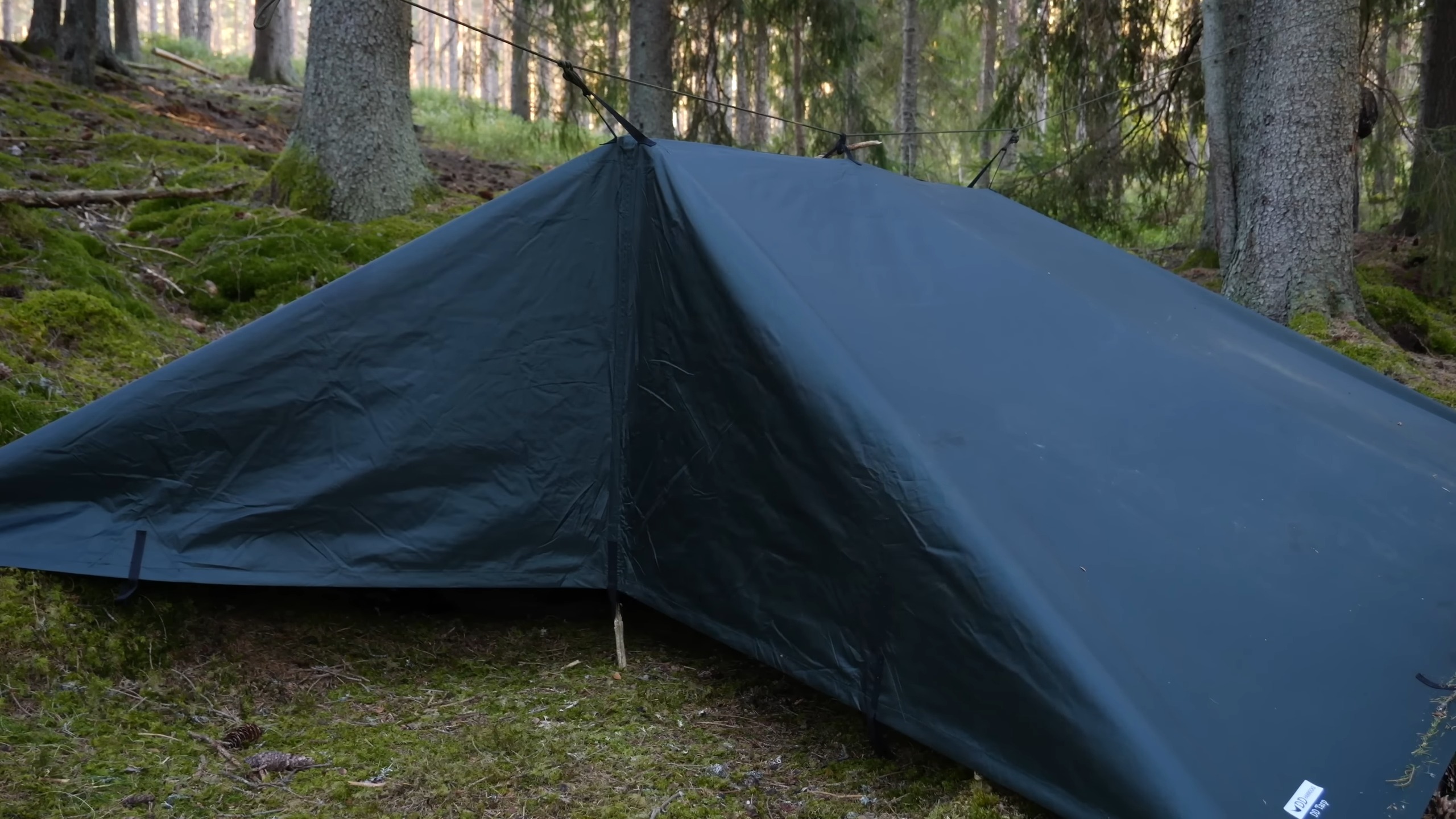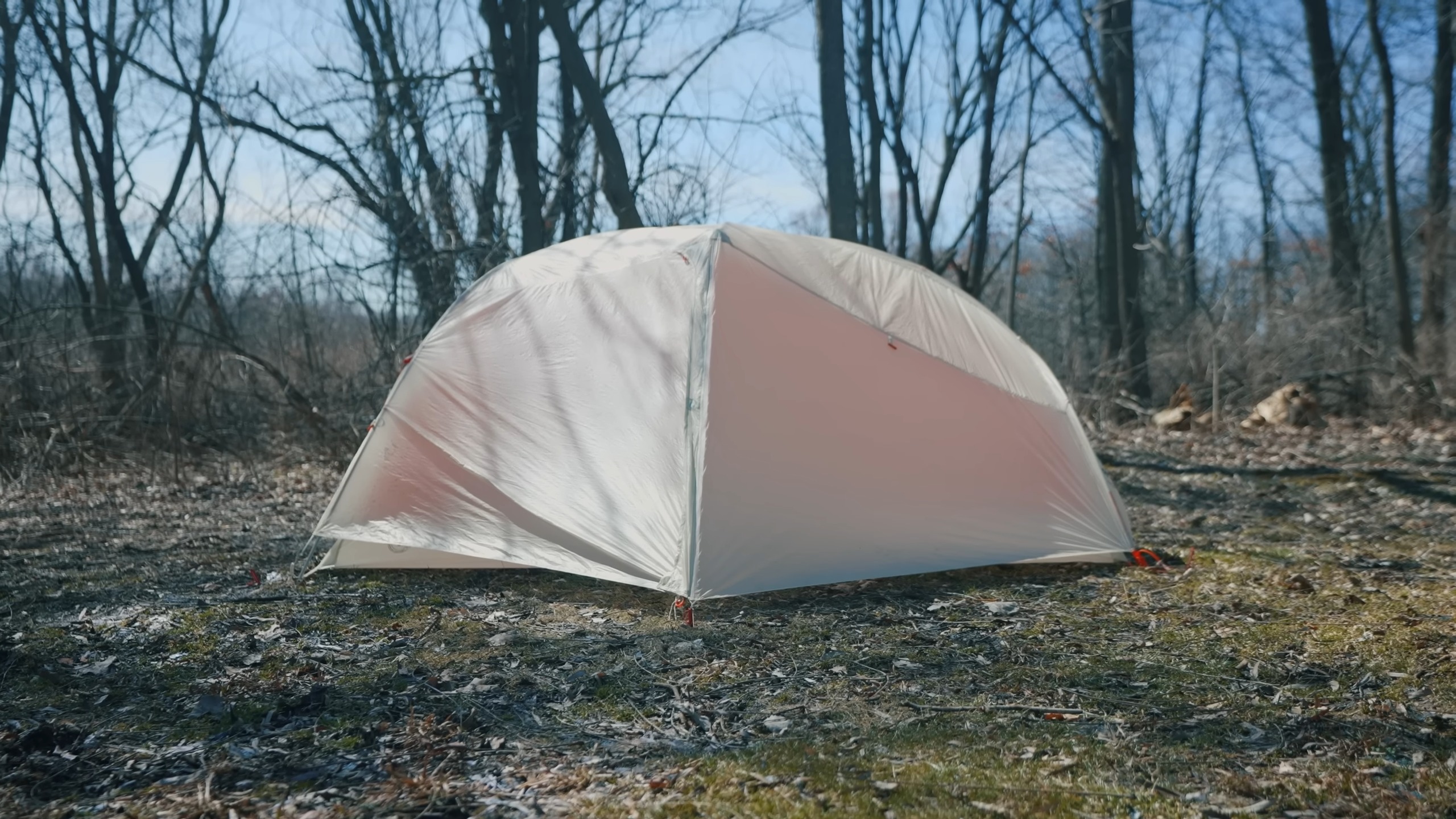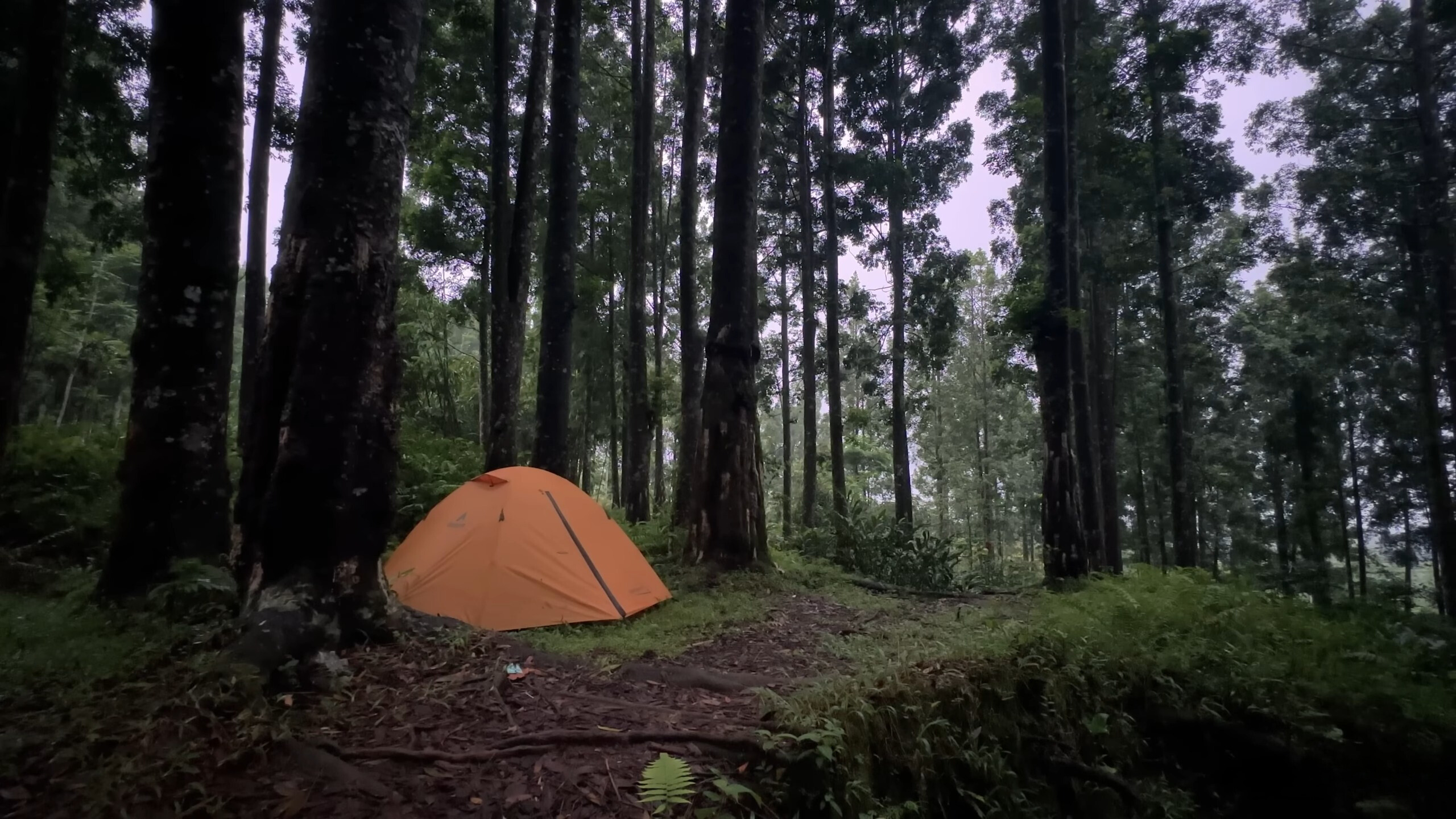After committing years to camping, I realized the importance of finding the right campsite. It’s not just about finding a spot to pitch a tent; it’s about creating a home base that can enhance your entire outdoor experience.
The initial step is to consider what you want from your camping trip. Are you looking for solitude or a family-friendly area? Do you need to be near water or prefer a panoramic vista? These preferences will guide your selection process. Remember, the choice of campsite can affect everything from your comfort to your safety.
Now, let’s go through all the things you need to know about choosing a good campsite.
Find the Right Campsite Terrain

Assessing the terrain is a critical step in selecting the perfect campsite. It’s not just about the view; the ground itself can affect everything from the stability of your tent to your comfort while you sleep. You’ll want to look for a level spot to avoid an uncomfortable tilt in your sleeping bag. Considering this factor is crucial for setting a tent properly.
It’s also wise to consider the composition of the ground. Soft earth may be comfortable, but it can become muddy in rain, while rocky ground can be challenging for tent stakes, regardless of whether there’s just two of you or more in a tent. You should be mindful of the potential for water to pool in the area you’re considering.
A slight elevation can provide natural drainage and prevent your campsite from turning into a puddle in the event of rain.
Here’s how you can assess the terrain effectively:
| Terrain Feature | Desirable Qualities | Potential Issues | Notes |
|---|---|---|---|
| Ground Level | Flat and stable | Uneven, sloped | Ideal for tent placement and comfort. |
| Soil Type | Firm, well-drained | Soft, muddy | Consider the weather and the likelihood of rain. |
| Elevation | Slightly raised | Low-lying areas | Avoid areas that could become waterlogged. |
| Vegetation | Grass, small bushes | Dense underbrush | Look for natural clearings to minimize impact. |
| Sun Exposure | Balanced shade | Excessive sun or shade | Consider the direction of the sun for warmth and light. |
| Wind Shelter | Natural barriers | Exposed, windy | Use terrain features to protect against the wind. |
The Importance of a Flat Area
When setting up a campsite, one of the first things to look for is level ground. A flat area is essential for a number of reasons. Primarily, it provides stability for your tent and sleeping bag of your choice, ensuring that you’re not rolling or sliding in your sleep.
It also makes cooking and other camp activities easier and safer, as you won’t have to worry about utensils or equipment rolling away. Tents are designed to be pitched on flat surfaces to withstand weather conditions effectively; an uneven pitch can lead to a less sturdy setup, which is particularly problematic in windy or stormy weather.
Flat area can also be a deciding factor in preserving the warmth inside your tent since sun exposure can play a role during the day.
A good campsite should have a stable, flat surface to safely set up your backpack stove, away from dry grass and flammable materials to minimize fire hazards. Ideally, the site should be sheltered from strong winds, which can make cooking difficult and potentially dangerous.
How to Spot and Create Level Ground if Necessary

Identifying level ground requires a keen eye. Look for areas that don’t have an obvious slope or signs of erosion. Avoid the base of hills where water may accumulate, and steer clear of ditches or depressions. If you’re in a forested area, look for spaces between trees where the ground is often more compact and even.
Sometimes, the perfect flat spot isn’t available, and you may need to do some minor landscaping. If it’s allowed in the area you’re camping, you can remove small rocks and sticks and gently flatten small bumps with your foot or a tool.
Always ensure that any alterations you make to the site are minimal and that you restore the area to its natural state before you leave, in keeping with Leave No Trace principles.
Water Source Proximity

Finding the right balance between convenience and safety when it comes to water sources is a skill I’ve honed over time. Being near water is convenient for cooking and cleaning, but too close, and you might deal with flooding, insects, or wildlife attracted to the water. Not to mention that it can help with future sleeping bag washing, if you have other products with you.
- Convenience: Ideally, a campsite should be within a 200-yard walk from a water source for easy access.
- Safety: Camping at least 200 feet from water helps protect water sources from contamination and reduces the risk of water-related accidents.
The risks of camping too close to water include the potential for flash floods, increased mosquito activity, and attracting wildlife. I always look for signs of previous flooding and consider the season and weather patterns when setting up near water. The pattern is rather similar to other forms of camping, like primitive camping.
Look for debris lines, water marks on trees, or silt deposits that indicate high water levels. Also, you should be aware of tracks or droppings that suggest frequent animal visits to the water source. If you want this experience to be somewhat of a challenge as well, you can always opt for more demanding variants such as dry camping.
Campsite Privacy Considerations

Privacy is a personal preference that varies with each camper. I prefer a quiet spot where I can enjoy nature without the buzz of a crowded campground. Finding a secluded spot often means venturing further from the main path or choosing less popular camping times.
- Distance from Paths: A campsite set back from trails and common areas can offer more privacy.
- Natural Barriers: Use natural features like rock formations or thickets to shield your site from view.
Too much seclusion can have drawbacks, such as being too far from amenities or help in case of an emergency. It’s about finding a happy medium.
- Accessibility: Ensure your private spot isn’t too difficult to reach, especially in an emergency.
- Community: Consider if you want to be near others for socializing or assistance.
Evaluating Weather Conditions and Climate
Weather plays a crucial role in your camping comfort and safety. Before setting out, I always check the forecast for the duration of my trip to ensure I’m prepared for any conditions.
Seasonal Weather Patterns
Summer might bring heat waves or sudden thunderstorms, while winter requires preparation for snow and freezing temperatures. Spring and fall can be unpredictable, with rapid weather shifts, so versatility in your gear and campsite choice is key.
Adapting to Climate
In humid areas, look for breezy sites to mitigate the discomfort and potential for mold and mildew. In dry climates, prioritize shade and proximity to water to stay cool and hydrated.
Preparation for Weather Changes
- Always have a contingency plan. If the weather turns severe, know where you can seek shelter or if you need to pack up quickly.
- Durable tents, weather-appropriate clothing, and an understanding of your environment can help you stay comfortable.
- Being prepared for weather changes may impact the cleaning process later since you can prevent many dirt from getting in if there’s no rain.
Accessibility and Transportation
Accessibility is a factor that directly affects your campsite choice. Depending on your mode of transportation, some sites might be more suitable than others.
Reaching Your Campsite

If you’re backpacking, ensure the site is within a reasonable distance and that you can carry your gear without overexerting yourself. For car camping, check if the roads leading to the campsite are suitable for your vehicle, especially if you’re driving an RV or pulling a trailer.
Balance of Remoteness and Convenience
Remote sites offer tranquility and a sense of adventure but consider the distance from emergency services or supplies. More accessible sites might not provide the same level of immersion in nature but can be more practical, especially for families or those new to camping.
Checking Regulations and Permissions
Before embarking on a camping trip, it’s crucial to be aware of and comply with the local regulations and permissions. These rules are designed to protect natural habitats, wildlife, and ensure the safety and enjoyment of all campers.
For instance, some regions may enforce fire bans during dry seasons to prevent wildfires, while others may restrict the use of certain types of camping gear to minimize environmental impact. Additionally, many parks and camping areas require visitors to obtain permits before setting up camp.
These permits help manage the number of campers, thus reducing overuse and preserving the quality of the camping experience. Securing the necessary permissions is also a matter of respecting the outdoors and fellow campers.
It’s not uncommon for popular destinations to have a cap on the number of visitors allowed at one time, which helps to maintain the serenity and cleanliness of the environment. To ensure a smooth and responsible camping experience, always check the requirements well in advance of your trip.
This not only helps in planning but also avoids the disappointment of arriving at your destination only to find you can’t legally camp there. Now we will provide you with varying regulations and permissions across different camping destinations:
| Region/Park | Fire Regulations | Gear Restrictions | Permit Required | Permit Cost | Maximum Stay |
|---|---|---|---|---|---|
| Rocky Mountain National Park | Seasonal bans | No RVs over 35ft | Yes | $30 per trip | 7 days |
| Yosemite National Park | Year-round in designated areas | Bear-proof containers mandatory | Yes | $20 per week | 14 days |
| Appalachian Trail | Allowed in designated areas with rings | No hammocks on certain trees | No | N/A | Variable |
| Boundary Waters Canoe Area | No fires during high-risk periods | Non-motorized boats only | Yes | $16 per person/day | 14 days |
| Zion National Park | Prohibited in backcountry | No drones | Yes | $15 per reservation | 14 days |
Certain camps have their own rules regarding the type of stoves visitors can use. Be sure to take that into consideration.
FAQs
How can I ensure my campsite is environmentally friendly?
There are several way you can ensure that your camping experience is environmentally friendly. Camp on durable surfaces and existing campsites. Use biodegradable soap and avoid contaminating water sources. Properly dispose of waste and use toilet facilities or dig a cat hole if necessary.
Can I camp anywhere I want in a park or wilderness area?
No, most parks and wilderness areas have designated campsites or areas. Always check with local land management agencies for camping regulations.
What natural hazards should I avoid when selecting a campsite?
Avoid camping under lone trees (risk of lightning), on top of hills (exposure to wind), in valleys (cold air pools and potential flooding), and near cliffs or unstable slopes (falling rocks).
How do I deal with trash at my campsite?
Pack out all trash, leftover food, and litter. Utilize proper disposal facilities if available, or take it with you when you leave.
Closing Thoughts
In selecting the ideal campsite, I rely on a blend of practicality, safety, and environmental impact.
I always aim for level ground to ensure comfort and drainage, seek out natural shelter to protect against elements, and maintain a respectful distance from water sources to preserve both personal safety and the local ecosystem.
All the principles i’ve named in this guide of mine will help you to find the perfect place for setting up a camp, you can be sure of that.
My name is Lazar, with over 8 years of dedicated camping across various terrains, I have garnered a significant expertise in evaluating camping gear for reliability and performance. My adventures have taken me through thick forests, along serene lakes, and atop remote hills, each experience sharpening my understanding of essential camping gear. Through hands-on use and thorough testing, I’ve honed my ability to discern the quality and practicality of various camping equipment, ensuring they stand up to the challenges posed by the outdoor environment. This extensive field experience has equipped me with the knowledge to share valuable gear insights, aiding fellow campers in their outdoor pursuits.